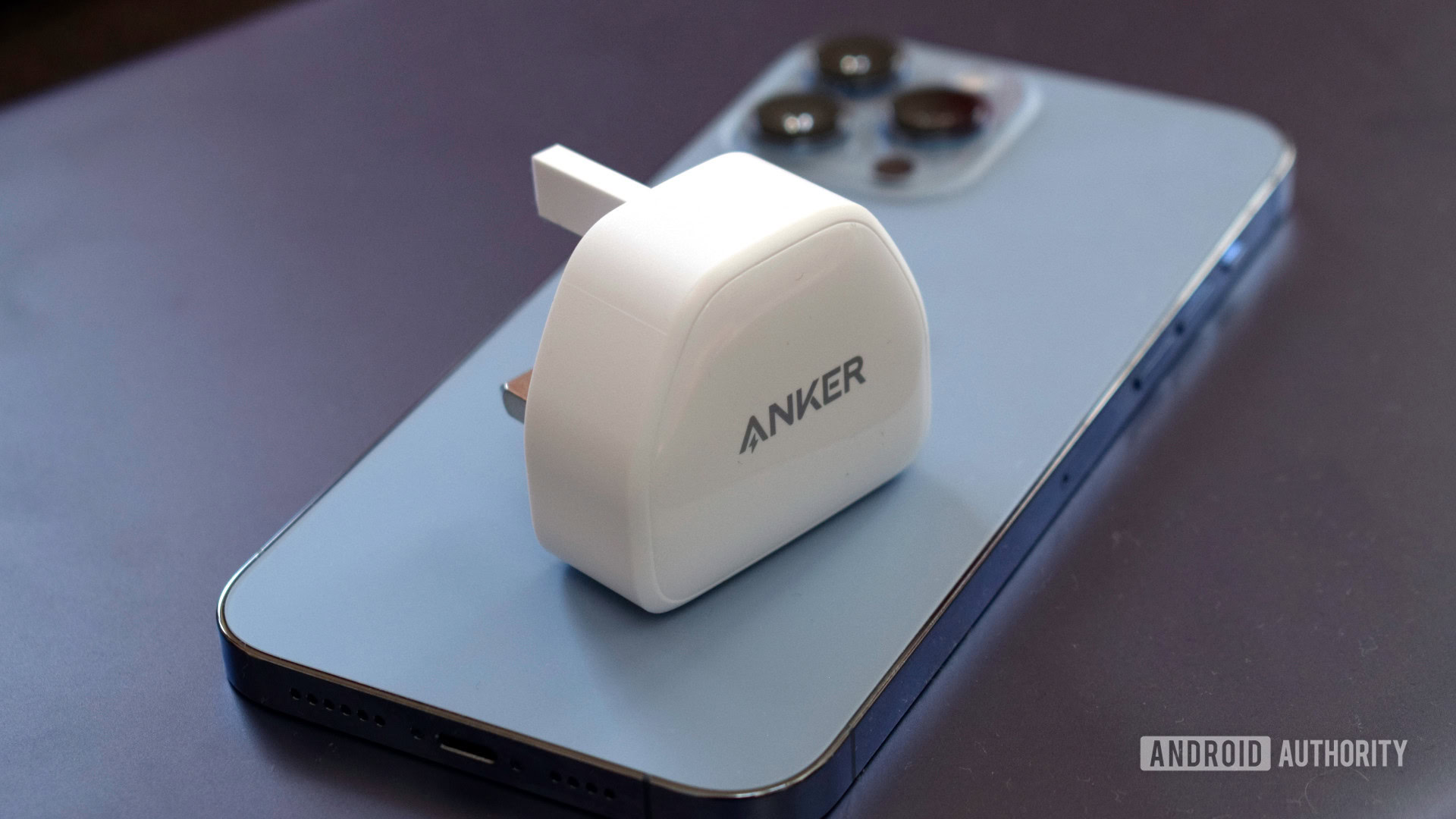Anker PowerPort III Nano review: Micro power
Anker offers a huge range of charging products to suit pretty much every charging need imaginable. Its PowerPort III Nano is designed specifically with space-saving in mind. It has to be one of the most compact USB-C charging products to ever grace the market. Of course, picking out the right charger for your gadgets isn’t just about size. The perfect accessory depends on how much power you need as well as the fast charging standards onboard. We’ll take you through the pros and cons in Android Authority’s Anker PowerPort III Nano review.
See also: The best phone charging accessories
What you need to know about the Anker PowerPort III Nano
Robert Triggs / Android Authority
- Anker PowerPort III Nano: $15.99 / £19.99 / €19.99 / Rs. 4,999
The Anker PowerPort III Nano is one of the most compact USB-C chargers on the market. The US design of the Anker PowerPort III Nano looks a little different from the UK version pictured in this review. However, it’s still a very compact charger, measuring just 39.8 x 39.1 x 33m (1.57 in x 1.54 in x 1.30 inches). The US and India models also sport retractable prongs for additional portability.
The plug features a single USB-C port with support for the USB Power Delivery 3.0 standard. Anker labels this as PIQ 3.0, but it conforms to the same standard and also boasts support for Quick Charge, Apple Fast Charging, and other older standards. The port provides up to 20W of power in either 5V 3A or 9V 2.22A modes.
Read more: The best wall chargers you can buy
The Anker PowerPort III Nano is available exclusively in White in the US, UK, EU, and India. Anker also sells a two-pack bundle ($23.99) or a three-pack ($30.99), to save you a little money. There’s no cable included in the box.
What’s good?

Robert Triggs / Android Authority
The compact size is the PowerPort III Nano’s obvious selling point. It’s small enough to fit in your pocket, making it the perfect travel companion or simply just a compact plug to discreetly tuck away on your power outlet. Both the UK and US designs are incredibly neat yet feel of sturdy construction.
With up to 20W of power onboard, the charger has enough juice to cover a selection of small USB-C and USB Power Delivery gadgets. A number of smartphones, such as Google’s Pixel 5, will change at their maximum 18W capabilities with this plug. Even faster-charging phones will fall back to 18W USB Power Delivery for slower charging speeds, so you’re well covered for compatibility.
Likewise, the charger supports the Nintendo Switch and other lower power USB-C accessories. The charger’s PIQ 3.0 port also did an OK job charging up some slightly older phones like the LG G8X (12W) and Nokia 7.1 (17W) that rely on older standards.
What’s not so good?

Robert Triggs / Android Authority
With just 20W of power onboard and just a single USB-C port, the Anker PowerPort III Nano is a somewhat limited charger. For example, the Apple iPhone 13 can take 20W of power but my testing revealed power a little shy of the mark with 18.7W reaching the phone. I’ve seen other plugs provide a little over 20W, although we shouldn’t quibble over a few watts too much.
However, the plug doesn’t support USB Power Delivery PPS to charge Samsung’s Galaxy S21 series at full speed. I recorded a rather mediocre 14.3W reaching the phone, notable less than the 25W you receive with a PPS compatible plug.
You can forget about charging bigger USB-C tablets and laptops with the adapter. While they will draw power, you’re looking at several hours to reach a full tank at 20W. The lack of a USB-A port also means you might be out of luck charging some older gadgets.
Anker PowerPort III Nano review: Should I buy it?

Robert Triggs / Android Authority
At $19.99, Anker isn’t asking a lot of money for this ultra-compact charger and the price feels about right. It’s cheaper than the equally compact Spigen PowerArc ArcStation Pro ($26.99). The Nano is a solid pick if you’re looking to charge a phone sporting the USB Power Delivery 2.0 or 3.0 standard. Apple’s iPhones and Google’s Pixels are particularly well covered. The charger’s size is also great for throwing in your laptop bag while off to work or on your travels.
You’ll struggle to find a more compact charger for your smartphone needs.
However, there are some caveats. This definitely isn’t a USB-C charger capable of powering up more demanding laptops and tablets. It also does not sport the latest USB PD PPS or Quick Charge 5 specifications used by some newer phones, so it’s not the most futureproof purchase. For those scenarios, you’ll want something like the 65W Anker PowerPort III Pod ($39.99).

Anker PowerPort III Nano
Micro charging
The Anker PowerPort III Nano is an ultra-compact USB-C charger built to charge 20W USB Power Delivery gadgets, such as Apple’s latest iPhones.
Top Anker PowerPort III Nano questions and answers
Q: Does this fast charge the iPhone 12 and 13 series?
A: Yes and at pretty much full speed.
Q: Does this fast charge a Samsung Galaxy S21?
A: No, although it still charges Galaxy S21 series faster than a basic USB plug. But it doesn’t support the USB PD PSS standard required to fast charge these phones at their maximum speeds.
Q: Does this come with a cable?
A: No. You’ll need to provide your own USB-C or Lightning adapter cable.
For all the latest Technology News Click Here
For the latest news and updates, follow us on Google News.
